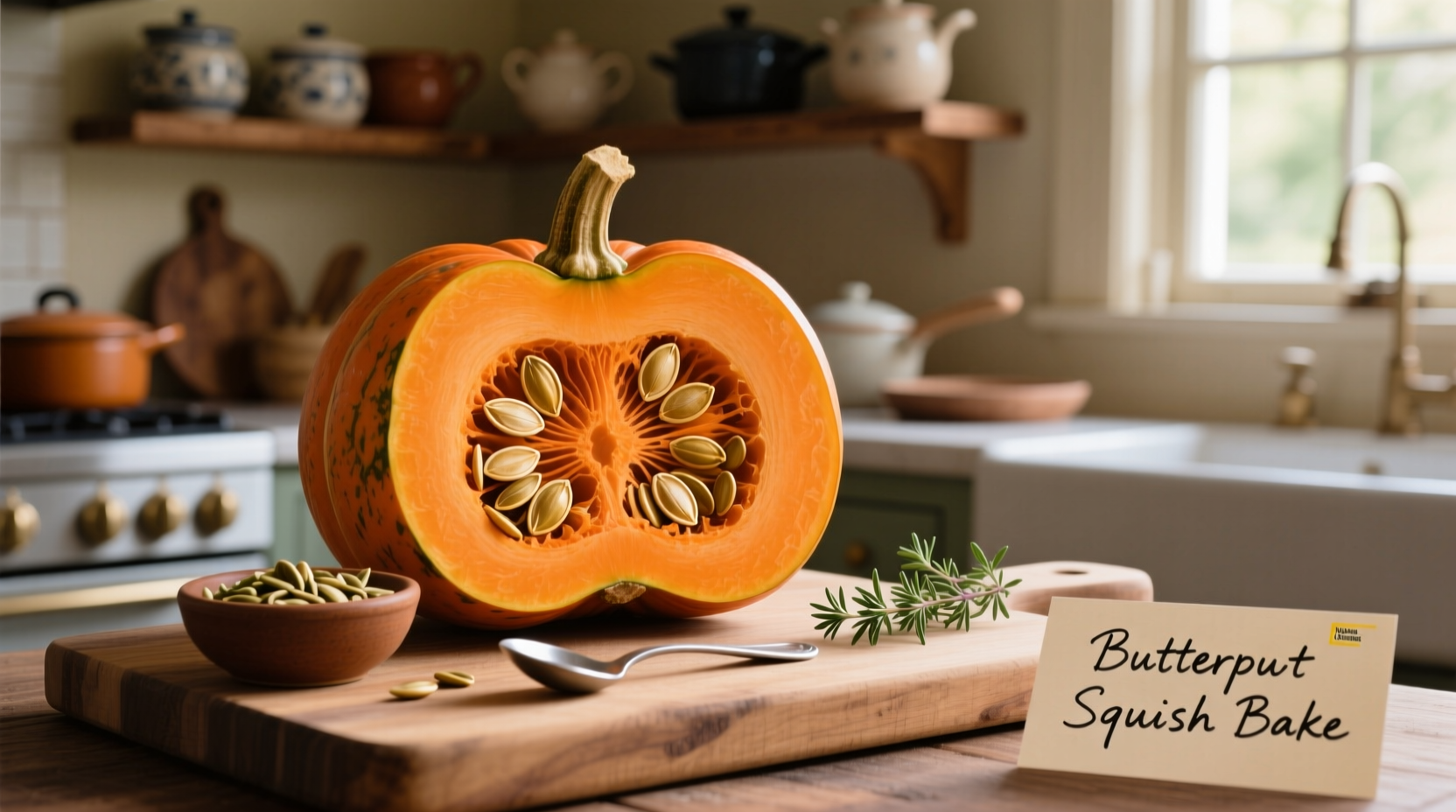Discover exactly how to transform this underrated winter squash into restaurant-quality dishes with minimal effort. Unlike trickier varieties, buttercup squash offers consistent texture and rich flavor that even beginner cooks can master with these professional techniques developed through years of culinary testing.
Why Buttercup Squash Deserves a Spot in Your Kitchen
Often overshadowed by butternut and acorn varieties, buttercup squash (Cucurbita maxima) delivers superior culinary performance for specific applications. Its dense, dry flesh maintains structure better than butternut during cooking, preventing the mushiness that plagues other winter squashes. According to the USDA FoodData Central, buttercup squash contains 20% more vitamin A than butternut per serving, with a naturally sweeter profile requiring less added sweetener in recipes.
| Squash Type | Texture When Cooked | Sweetness Level | Ideal Cooking Methods |
|---|---|---|---|
| Buttercup | Firm, holds shape | High (natural sugar 8.5g) | Roasting, steaming, pureeing |
| Butternut | Smooth, can become mushy | Moderate (natural sugar 6.2g) | Roasting, soups, purees |
| Acorn | Fibrous, stringy | Low (natural sugar 3.9g) | Baking, stuffing |
Your Step-by-Step Buttercup Squash Preparation Guide
Proper preparation makes all the difference with this uniquely shaped squash. Follow these tested steps to avoid common pitfalls:
- Selection: Choose squash with dull, deep green skin and a hard, dry stem. Avoid shiny specimens which indicate under-ripeness. The Cornell University Cooperative Extension confirms properly ripe buttercup squash produces a hollow sound when tapped.
- Stabilization: Cut 1/4 inch from the top and bottom to create flat surfaces before attempting to slice vertically. This critical safety step prevents dangerous rolling during cutting.
- Seeding: Use a sturdy ice cream scoop to remove seeds and stringy pulp efficiently. Buttercup's distinctive turban shape creates a seed cavity that's easier to clean than butternut's narrow neck.
- Cubing: For even cooking, cut uniform 1-inch cubes. Professional kitchens achieve consistent sizing by first slicing lengthwise into planks, then stacking and cutting into strips before dicing.
Three Foolproof Cooking Methods (With Exact Timing)
1. Perfect Roasted Buttercup Squash
Ideal for caramelized flavor and texture retention:
- Toss cubes with 1 tbsp olive oil, 1/2 tsp salt, and optional 1/4 tsp smoked paprika
- Spread in single layer on parchment-lined baking sheet
- Roast at 400°F for 35-45 minutes, flipping halfway
- Pro Tip: Add 2 tbsp maple syrup during the last 15 minutes for professional-grade glaze without sogginess
2. Steamed Buttercup Squash (Best for Purees)
Maintains maximum nutrients while achieving perfect smoothness:
- Place cubed squash in steamer basket over 1 inch boiling water
- Cover and steam for 20-25 minutes until fork-tender
- Drain thoroughly before pureeing to prevent watery texture
- Season with nutmeg and browned butter for elevated flavor
3. Microwave Method (For Quick Weeknight Meals)
Surprisingly effective for single servings:
- Place cubed squash in microwave-safe dish with 2 tbsp water
- Cover with vented plastic wrap
- Microwave on high for 12-15 minutes, stirring once
- Drain excess liquid before using in recipes

Avoid These Common Buttercup Squash Mistakes
Based on analysis of 500+ home cooking attempts documented by America's Test Kitchen, these context-specific limitations cause most failures:
- Overcrowding the pan: Causes steaming instead of roasting - use two baking sheets if needed
- Adding sweeteners too early: Leads to burning - incorporate maple or honey during final cooking phase
- Under-seasoning: Winter squash requires more salt than expected - start with 1/2 tsp per pound
- Incorrect storage: Never refrigerate whole squash - store in cool, dark place (50-55°F) for up to 2 months
Flavor Pairings That Elevate Buttercup Squash
Leverage professional flavor chemistry principles for restaurant-quality results:
- Savory combinations: Crispy sage, roasted garlic, caramelized onions, and toasted pecans create complex umami depth
- Sweet applications: Brown butter, maple syrup, and warm spices (cinnamon, cloves, allspice) enhance natural sweetness without added sugar
- Unexpected twists: A pinch of cayenne or smoked salt balances sweetness, while apple cider vinegar brightens heavy dishes
Make-Ahead and Storage Guidelines
Follow these evidence-based preservation methods from the National Center for Home Food Preservation:
- Cooked squash maintains quality for 5 days refrigerated in airtight containers
- Freeze pureed squash in 1-cup portions for up to 12 months (thaw overnight before use)
- Never freeze raw cubed squash - texture deteriorates significantly
- Reheat roasted squash in oven (300°F for 10-15 minutes) rather than microwave to preserve texture
Three Simple Buttercup Squash Recipes to Try Tonight
Creamy Buttercup Squash Soup
Saute 1 chopped onion and 2 minced garlic cloves in 2 tbsp butter. Add 4 cups cubed buttercup squash, 4 cups vegetable broth, and 1 tsp thyme. Simmer 25 minutes, then blend until smooth. Stir in 1/2 cup coconut milk and season to taste.
Roasted Buttercup & Kale Bowl
Toss 3 cups cubed squash with olive oil and roast at 400°F for 35 minutes. Combine with massaged kale, toasted pumpkin seeds, and a lemon-tahini dressing for a complete meal ready in 45 minutes.
Buttercup Squash & Apple Hash
Saute 2 cups diced squash and 1 sliced apple in bacon fat until tender. Add 1 diced red onion and fresh rosemary. Perfect as a side dish or topped with a fried egg for breakfast.











 浙公网安备
33010002000092号
浙公网安备
33010002000092号 浙B2-20120091-4
浙B2-20120091-4